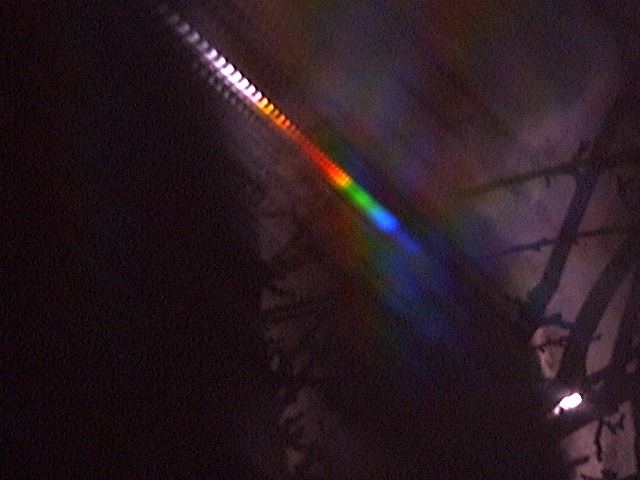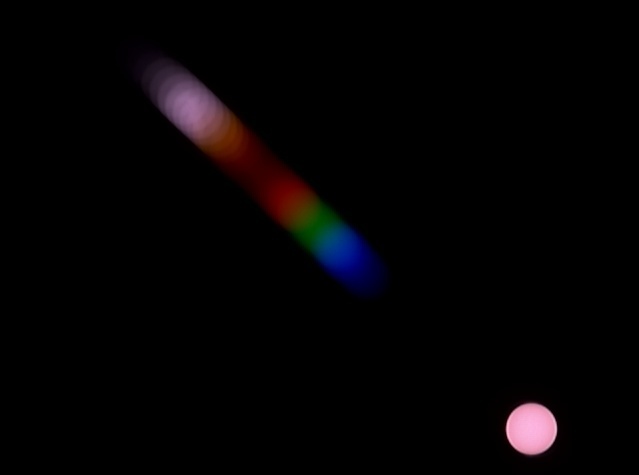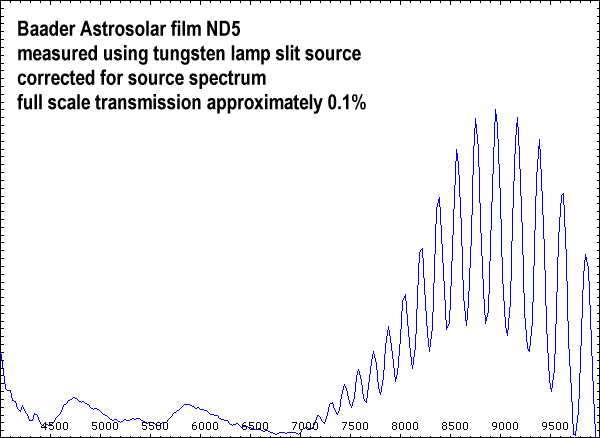|
Solar spectrum using tree branches as slit aperture |
|
|
|
This spectrum was recorded using the Star Analyser 100 l/mm grating mounted in front of a 29mm SLR lens. Baader Solar Film (ND5) was used as a filter. The camera was a Toucam Pro webcam. The tree branches acted as a crude slit aperture. A strange pattern of absorption lines is apparent. (not the expected characteristic Fraunhofer lines) An explanation is sought for this phenomenon. |
|
|
The phenomenon is still present without the slit effect of the tree branches, particularly in the IR region though not as pronounced, presumably due to the larger size of the source. |
|
|
The effect is still visible if a tungsten filament lamp is used as a slit source. (The fringes are not seen if a diffuse source is used with the slit placed after the filter) |
|
|
This graph shows the transmission of the Astrosolar film based on the above spectrum (corrected for the spectrum of the source) The transmission characteristics of the film are not flat, with significant variations in the visible spectrum and an increase in transmission in the near IR (Note that despite these variations, the transmission is maintained at a very low level across the measured spectrum) The regular fringes are apparent in the near IR and it is believed would continue into the visible, limited here by the spacing of the fringes becoming smaller than the slit width. The conclusion is that the fringe pattern is produced by interference effects, caused by internal reflections between the two coated surfaces of the film. Measurement of the spacing of the fringes predicts a thickness of 10 microns for the film, which was confirmed by direct measurement |



